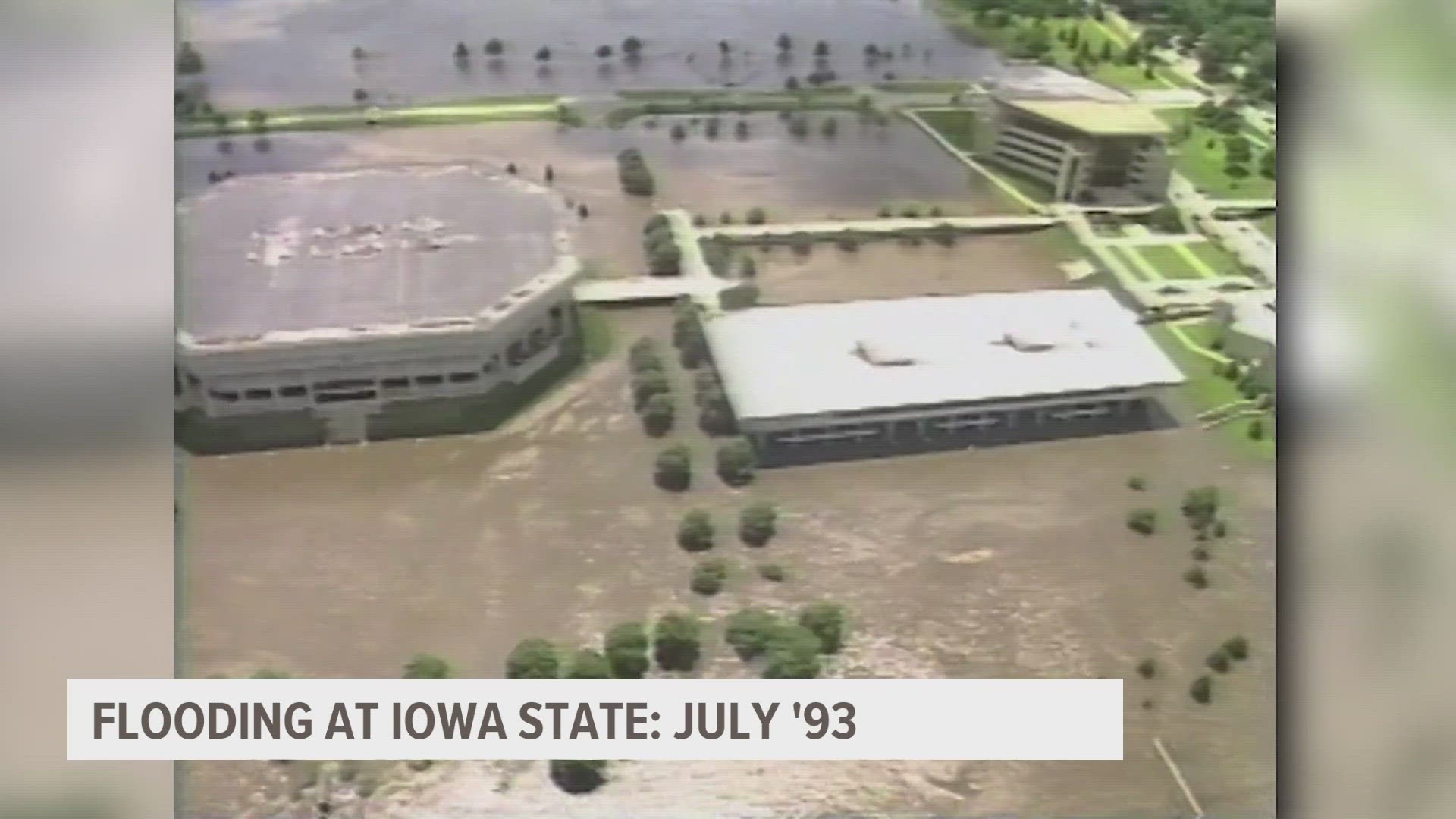AMES, Iowa — Record flooding hit central Iowa, along with many other areas of the Midwest, thirty years ago.
The "great flood" of 1993 caused damage throughout the state, and ultimately led to the failure of Des Moines Water Works' treatment plant on Fleur Drive.
But Des Moines wasn't the only affected area. Ames suffered as water inundated places like Hilton Coliseum on the Iowa State University campus.
The Iowa State Center, which houses thousands of historical ISU artifacts in the Scheman Building, was also among the facilities most severely impacted.
The flooding forced employees to work around the clock to save everything they could, especially because some of the artifacts housed there at the time didn't actually belong to the university.
Lynette Pohlman, director and chief curator at the Iowa State Center, says she spent the night at the center for several months as she and her staff worked to regulate the building's temperature and humidity.
“When you’re faced with the loss of your cultural heritage, it’s a pretty traumatic thing," Pohlman said. "It doesn’t show on the outside, but when you stand back and say… what would we be if we lost, not just the collection, but some of the other things we could’ve lost on campus.”
It took weeks for Iowa State University and Ames to completely recover from the flooding.
Iowa State University employees created more comprehensive disaster plans in the years afterwards, which helped them prepare much more effectively for future floods, like the one in 2008.

